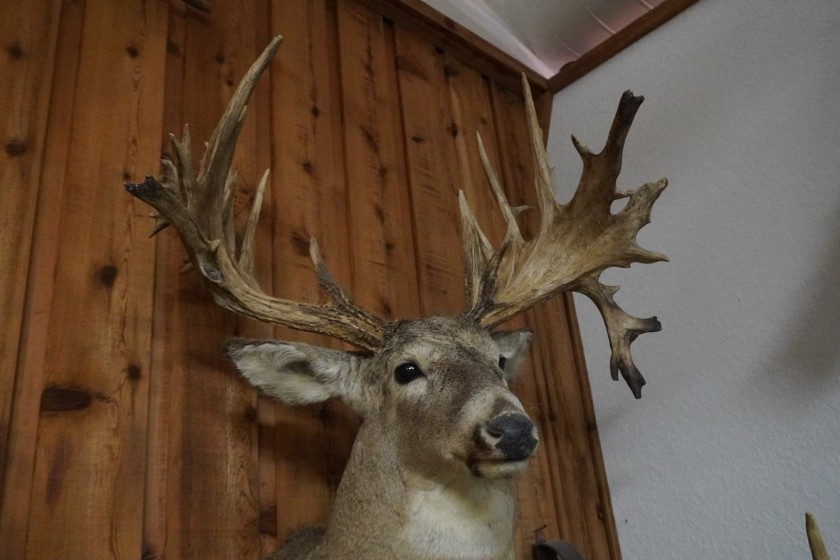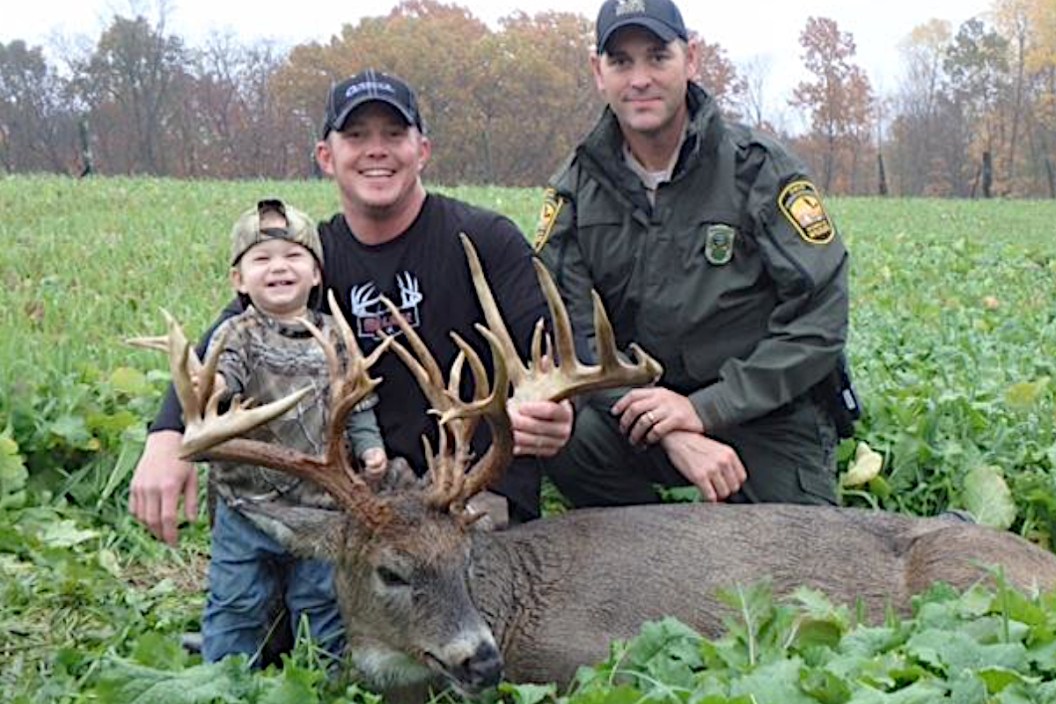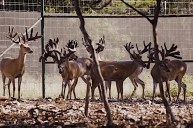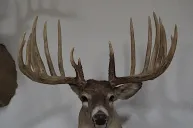Social media is both a blessing and a curse. It's great to connect with other like-minded individuals who love and appreciate the outdoors to share tips and tactics that help us fill the freezer season after season. The curse part happens every year whenever a hunter is fortunate enough to bag a world class buck. That's when a switch seems to flip in the hunting community. People get downright nasty and mean, and the accusations start flowing like water evert time a monster whitetail buck is downed.
It's a disheartening trend, one that only seems to get worse with every passing year. I've even noticed "fellow hunters" even attacking children who shot big bucks, accusing their parents of having paid for a "high fence deer." If the luckiest hunters out there aren't being accused of shooting a deer in a pen, they're like being accused of having poached the animal. It's gotten depressing to the point that I can't even read the comments on a successful hunter's photo anymore. It has led me to question if I'd ever reveal it to the world if I shot a world class buck. Which makes me wonder, how on Earth did we get to this point? And is there anything we can do to change it?
"It's a Farm Deer!"

Travis Smola
Before you go off thinking I'm defending the high fence deer hunting operations, just know that I'm not. I think they're a bane and shameful dark secret of the whitetail deer hunting world. It's bad enough escapees from these operations often spread diseases to the wild deer population. Wisconsin is now so inundated with CWD that I doubt it'll ever fully recover, all because of a few careless high fence ranches.
But the bigger problem is that it cheats the real, wild hunting experience. The type of hunt our fathers and forefathers participated in. These canned hunts practically guarantee a harvest, basically spitting in the face of those who choose to do things the right way. I simply cannot see the enjoyment someone gets out of a trophy deer that cannot escape and is guaranteed to them.
Perhaps the worst aspect of it is the treatment of the animals themselves. In order to make the largest whitetail trophy possible, these animals are selectively bred, then pumped full of growth hormones and other substances to increase antler growth. By the time late summer arrives, many of these animals have an uncomfortable looking of unnatural antler on their heads. It just makes me sad. The worst side effect is that now many whitetail hunting enthusiasts are in disbelief of every big deer they see.
Years ago, I wrote was about 100-percent wild, known world-record-sized bucks that never met up with a hunter's bullet or arrow. On that list, I included the famous "Minnesota Monarch," which currently holds the record for the largest set of sheds off a wild whitetail ever.
Animals like that and the famous "Hole-in-the-Horn," and "Missouri Monarch," were documented to be 100-percent wild and 100-percent free-ranging. In fact, they are both confirmed by multiple witnesses. No genetic manipulation or high fences here. In the case of the Missouri Monarch, it was even confirmed by the Missouri Department of Conservation only hours after the buck's body being found dead outside St. Louis in 1981. The Hole-in-the-Horn was found dead in 1940, nearly thirty years before the first deer farmer started pumping bucks full of hormones. Yet, when we shared this story on Facebook, some hunters commented with disparaging remarks about the deer like, "No one would pay the $50,000 to shoot him," or "Died waiting for someone to buy him."
This wasn't an isolated incident. As I've written many times in the years since that piece about many record deer. I'll never forget when news of Stephen Tucker's 312-inch Tennessee whitetail first broke and we shared it. The Tucker's buck was confirmed to be fair chase and wild by multiple witnesses and hunters on neighboring properties that were also pursuing the beast of the deer herd.
When the first story of that deer hit social media channels, we were bombarded with comments about the deer being "genetically engineered," or "impossible." It was the same story with Luke Brewster's 327 7/8-inch Illinois giant just a few years later. It never ceases to amaze me how downright nasty people get when reacting to a buck like this. These attitudes always have me wondering.
How We Got Here

Travis Smola
We as hunters didn't always have this type of attitude with big deer. The seeds were sown in the mid-1970s when deer breeders first started selectively breeding whitetails to produce more desirable traits like crazy non-typical racks and drop tines. It wasn't long after that someone realized there was big money to be made from breeding big bucks, as well as selling them to people to shoot on hunting ranches.
As time has gone on, things have gotten more and more extreme. Some breeders pump the bucks full of hormones and do supplemental feedings specifically made to produce bigger and bigger antlers. In some cases, there have been whitetail deer with 400-500 inches worth of antler. These deer are just uncomfortable to look at, and we imagine the bucks are usually in a lot of pain from their excessive headgear. The breeders then turn around and sell these animals for hundreds of thousands of dollars either to other breeders or high-fence operations to sell on "trophy whitetail hunts" behind 13-foot-high fences.
Slowly, word leaked out that these shady operations were popping up everywhere. Now, decades later, many hunters have slipped into a mentality that truly massive whitetails are simply impossible in the wild. It seems to be more of a problem for non-typical deer than typical deer. Many hunters simply won't believe a whitetail deer can produce 250-300 inches of antler in the wild, even with quality deer management.
Although there's another disturbing trend. If a hunter somehow avoids the "high-fence" accusation, nine times out of ten they're immediately accused of being a poacher. I'm not quite sure where this second accusation comes from. Maybe it comes from more poaching cases making high-profile headlines. Maybe it's from personal frustrations people have experienced as a result of wildlife crime. It's hard to say, but it seems like every new Boone and Crockett class buck that falls gets lumped into either of these two accusations.
History Proves 250-300 Inches Is Possible In the Wild

Travis Smola
I'm also left scratching my head as to why so many hunters seem to underestimate what nature is capable of under the right circumstances. Because it is possible for completely wild whitetails to look like these so-called "farmed deer" that so many people accuse them of being. I like to use the Texas State Record non-typical as an example here. That buck was shot in the late 1890s and it produced an unbelievable 280-plus inches of antler almost 80 years before hunters began breeding deer.
How about the famous "Hole-in-the-Horn" buck? This 328-2/8-inch monster didn't come from a hunting preserve. It lived a 100-percent wild existence in Portage County, Ohio, before someone found it dead in 1940. Ohio didn't even have an open deer season at the time because the species was still rebounding from the negative effects of market hunting that devastated American deer herds. How about the Sal Aherens buck shot in 1956? Or the Alexander McDonald buck shot in 1960? James Jorden shot his former world record typical in 1914. John Breen's former world record typical 10-point fell in 1918. Maine's non-typical state record Hill Gould buck, pictured above, was shot in 1910, more than a hundred years ago. Yet one look at that buck's antlers confirms it would surely be labeled a high fence buck if it popped up today.
I could go on and on with dozens of other examples, but I'll leave it there. Many hunters seem to be under the mentality of "seeing is believing." So, why do hunters not believe this type of deer is possible in the wild anymore? It boggles the mind and is beyond frustrating for anyone who loves to follow big deer stories. It probably doesn't help that this type of world class buck is rare. You probably have better odds of winning the Powerball lottery than downing a 300-incher. But even knowing that, it doesn't mean it cannot happen in an area with the right genetics and nutrition at the right time. Do you honestly think someone was prepping food plots and pumping hormones into deer in Ohio when the Hole-in-the-Horn was walking around back in 1940? Because history shows otherwise. That deer is as natural as it gets.
Why It Matters
In the summer of 2015, Ohio hunter Dan Coffman was getting multiple trail camera photos of an unbelievable non-typical whitetail buck in his hunting area. Coffman could see the writing on the wall. He knew the possible scrutiny and doubt that comes with the harvest of a buck like this. So, he notified a local DNR officer of the animal months in advance. When Coffman finally did harvest the buck, he called the officer out to the scene to inspect everything. This included his hunting property, his treestand where he took the shot, the spot where the buck was standing, and where it finally fell over dead. He also had the officer pose for photos with him and his monster whitetail. These photos were then shared by the Ohio Department of Natural Resources on their social media channels. There was no question it was a fair chase hunting situation.
As a result, the internet speculation was at a minimum and Coffman's buck became one of the highest-scoring Ohio whitetails ever at 288 inches. Still, it's wild to think that Coffman's actions weren't even damage control after the fact. Instead, it was a pre-emptive strike before he even had the buck in his sights!
Even then, trying to control the narrative ahead of time with proof isn't always foolproof. Just look at the Joe Franz buck, a record Iowa whitetail taken in 2014 as proof of that. Franz was also aware the giant buck on his trail cams would probably be met with doubt. That's why he purposely filmed his hunt for the 23-pointer. His hope was to stave off nasty rumors of high fences and poaching. It didn't matter, Franz was accused of poaching anyway and had to spend a ton of money to prove his innocence in court and get his muzzleloader and mount back after the Iowa DNR confiscated them.
It saddens and angers me either hunter had to do those things just to prove their harvests were legitimate. Why do we not trust our fellow hunters anymore? Why are the Internet mobs so quick to disparage and discredit every super-large whitetail before the facts are even out? Sadly, it seems the jealousy of some hunters is now so bad, every hunter who's lucky enough to take a big buck is now guilty until proven innocent. Can we not be happy for the lucky man, woman or child who's fortunate enough to take the deer of a lifetime without accusing them of cheating?
Put yourself in their shoes. If you were lucky enough to legally harvest a 300-inch wild whitetail, would you appreciate someone accusing you of paying to shoot it in a pen or poaching it? Spreading these rumors disrespects the deer and the hunter who took it.
In the past, I've written about how the last thing the hunting community needs is more division and strife in our ranks. Hunter numbers are falling everywhere and it's no wonder few want to join the tradition. If I were to join a hunting Facebook group or jump onto Reddit and see this behavior, I wouldn't want to be part of that group either. Too many hunters are fast to judge without thinking about what this type of behavior looks like to an outsider.
That's why I have a proposal for all our Wide Open Spaces readers this season. As the big bucks start to fall across the country this fall, refrain from fanning the flames. Hold off on the speculation and rumors about big bucks coming from poaching or high fence hunting facilities. Please, just wait until the facts are in, and be sure to read the whole story before you comment or pass judgement to a buddy via a text message. Too many misunderstandings come from only reading headlines. Let's at least try to make the hunting community, both online and in person, a better place starting today.
For more outdoor content from Travis Smola, be sure to follow him on Twitter and Instagram For original videos, check out his Geocaching and Outdoors with Travis YouTube channels.
READ MORE: 5 WILD, WORLD-CLASS BUCKS THAT SUCCESSFULLY AVOIDED ALL HUNTERS





